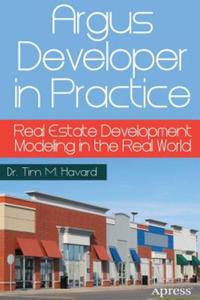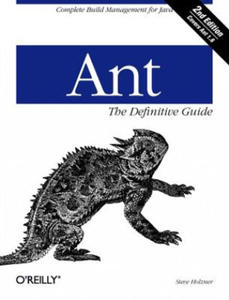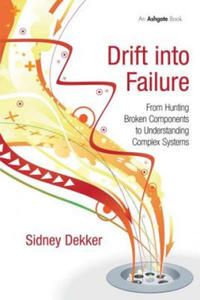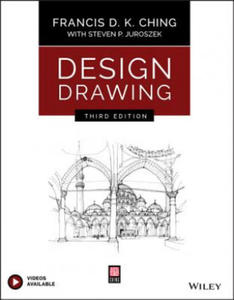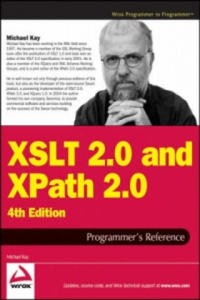krainaksiazek complexity studies as a new tool 20096010
- znaleziono 203 produkty w 13 sklepach
Minimal English for a Global World Springer International Publishing AG
Książki / Literatura obcojęzyczna
This book introduces a new tool for improving communication and promoting clearer thinking in a world where the use of Global English can create numerous comprehension and communication issues. Based on research findings from cross-linguistic semantics, it contains essays and studies by leading experts exploring the value and application of 'Minimal English' in various fields, including ethics, health, human rights discourse, education and international relations. In doing so, it provides informed guidelines and practical advice on how to communicate in clear and cross-translatable ways in Minimal English. This innovative edited collection will appeal to students and scholars of applied linguistics, language education and translation studies.
Sklep: Libristo.pl
Język a komunikacja 10. At the Crossroads of Linguistic Sciences Tertium
Dla tłumaczy
Seria "Język a komunikacja" W obliczu jednoczenia się Europy porozumiewanie się ponad podziałami politycznymi, kulturowymi i językowymi staje się potrzebą bodaj czy nie najważniejszą. "Tertium" , Krakowskie Towarzystwo Popularyzowania Wiedzy o Komunikacji Językowej powołane do życia przez grupę pracowników Wydziału Filologicznego Uniwersytetu Jagiellońskiego w 1995 roku, wychodzi naprzeciw temu wyzwaniu. Społeczność akademickich filologów chciała dać impuls takim poczynaniom, które zainicjowałyby forum dyskusyjne na temat komunikacji językowej ponad podziałami na filologie, w szerokim środowisku, nie tylko krakowskim, lecz także ogólnopolskim. Troską pomysłodawców było, by rzetelne przemyślenia, ciekawe pomysły, sprawy budzące zainteresowanie, choć nie pozbawione naukowego zaplecza przybierały zarazem tak przystępną formę, by przysłowiowy przeciętny inteligent mógł bez trudu i nie bez przyjemności z nimi się zapoznać. Zbiór referatów omawiających problematykę językoznawstwa formalnego, kognitywnego, a także analizy dyskursu i teorii przekładu. SPIS TREŚCI: Kamila Turewicz - Preface Clifford Geertz - A Life of Learning Faces of Cultural and Anthropological Linguistics 1. Piotr P. Chruszczewski - On the Fractal Nature of Linguistic and Cultural Communication 2. Jan Cygan - Gothic at a Glance 3. Kathleen R. Gibson - Customs and Cultures in Animals and Humans 4. Marcin Walczyński - Selected Aspects of Multilingualism in Papua New Guinea 5. Anna Wierzbicka - Russian Cultural Scripts: the Theory of Cultural Scripts and its Applications Faces of Lexis 1. Elena Bonta - Argumentation - a Special Form of (Inter)Action 2. Konrad Klimkowski - Selected Remarks on the Concept of the Lexicon in Modern Linguistic Thought 3. Ioan Lucian Popa - A Case of Logical Synonimity: Fanic Synonimity 4. Elżbieta Tabakowska - Iconicity in Language - from Julius Caesar to Sebastian Janikowski 5. Maciej Widawski - Motives for Using Slang: Investigations Based on Citational Evidence Faces of Cognitivism 1. Henryk Kardela - The Dynamicity of Categorization in Cognitive Grammar 2. Barbara Lewandowska-Tomaszczyk - Faces of Contemporary Cognitivism Faces of Discourse 1. Camellia Cmeciu - Fairy Tales - Political Intertextuality 2. Magda Czyrek - Polish Criminal Court Cases as the Example of Linguistic Vagueness 3. Karin Ebeling - The Language of War in the Media 4. Beata Gołębiewska - Hyperbole as a Tool of Manipulation 5. Cornelia Ilie - Micro-level Coherence Patterns in Institutional Discourse 6. Ewa Komorowska - Directive Speech Acts in Linguistic Communication 7. Monika Kopytowska - News in the Minds of Men 8. Agata Stopińska - Doing Gender in the Irish Press Faces of Humor 1. Władysław Chłopicki - Humour and Cognition: Dynamics of Characters and Events 2. Christie Davies - How Jokes Change and May Be Changed: Simplifying, Transforming and Revealing Faces of Formal Linguistics 1. Jouni Rostila - Construction Grammar as a Functionalist Generative Grammar 2. Ewa Rudnicka-Mosiądz, Dorota Klimek - Grammatical Aspect and Semantic Aspect Faces of Translation Studies 1. Gloria Corpas Pastor, Jorge Leive Rojo - On the Rendering of System-equivalent Phraseological Units 2. Olgierda Furmanek - Psychodynamics of the Interpreted Event 3. Tomasz P. Górski - On Translating Culture: Between Domestication and Foreignization 4. Anna Strużyk - On the Transfer of Meaning in the Translation Process Faces of Art and Literature 1. Doina Cmeciu - Towards a Poetic Discourse 2. Michał Garcarz - Talking Movies 3. Izabella Anna Malej - Polyphonic Provocation: the Nude in the Art of Cubo-Futurism
Sklep: Księgarnia.Poltax.waw.pl
Analytics in a Big Data World - The Essential Guide to Data Science and its Applications John Wiley & Sons Inc
Książki / Literatura obcojęzyczna
The guide to targeting and leveraging business opportunities using big data & analytics By leveraging big data & analytics, businesses create the potential to better understand, manage, and strategically exploiting the complex dynamics of customer behavior. Analytics in a Big Data World reveals how to tap into the powerful tool of data analytics to create a strategic advantage and identify new business opportunities. Designed to be an accessible resource, this essential book does not include exhaustive coverage of all analytical techniques, instead focusing on analytics techniques that really provide added value in business environments. The book draws on author Bart Baesens' expertise on the topics of big data, analytics and its applications in e.g. credit risk, marketing, and fraud to provide a clear roadmap for organizations that want to use data analytics to their advantage, but need a good starting point. Baesens has conducted extensive research on big data, analytics, customer relationship management, web analytics, fraud detection, and credit risk management, and uses this experience to bring clarity to a complex topic.Includes numerous case studies on risk management, fraud detection, customer relationship management, and web analytics Offers the results of research and the author's personal experience in banking, retail, and government Contains an overview of the visionary ideas and current developments on the strategic use of analytics for business Covers the topic of data analytics in easy-to-understand terms without an undo emphasis on mathematics and the minutiae of statistical analysis For organizations looking to enhance their capabilities via data analytics, this resource is the go-to reference for leveraging data to enhance business capabilities.
Sklep: Libristo.pl
Argus Developer in Practice Springer-Verlag Berlin and Heidelberg GmbH & Co....
Książki / Literatura obcojęzyczna
This book is a practical guide to using Argus Developer, the world's most widely used real estate development feasibility modeling software. Using practical examples and many case studies, it takes readers beyond basic training and provides the in-depth knowledge required to analyze potential real estate deals and help ensure a profitable development.§§Argus Developer in Practice fills an important gap in the market. Argus Developer, and its predecessor Circle Developer, has long had a dominant position as the primary real estate development appraisal tool. It is used all over the world on a variety of projects ranging from simple residential projects to huge and complex master planned, mixed-use, commercial, residential, and leisure projects. It also shines when used to appraise "refurbs" - taking an existing building or complex and upgrading it or turning it into something entirely different.§§Argus Developer in Practice , the first book that concentrates on the practical application and use of the program, goes beyond the manual that comes with it by taking you through the development/project appraisal process step by step. In addition, author Tim Havard has over 25 years of experience in carrying out development appraisals both in practice and in teaching at the postgraduate level in UK and Australian universities. He started using the DOS version of Circle Developer in 1990, then worked for both Circle and Argus training clients on the software in the UK, continental Europe, and the Middle East. Besides showing you how to use the program, Havard shows you how to think like a successful real estate developer.§§Using an extensive array of screenshots, Argus Developer in Practice delves deeply into practical use of the program by offering case studies of varying complexity that will help real estate professionals not just analyze development projects but also learn how the best minds in real estate analyze a project's potential. You will learn:§§How to model both simple projects and complex mixed-use and multi-phased investment schemes §How to model new uses for existing properties §How to think through real estate project problems §How to analyze a potential development project in depth §By using the program efficiently and making use of its more advanced features, you can help ensure a profitable project without the surprises that accompany most real estate ventures. Argus Developer in Practice therefore provides something priceless - peace of mind.§
Sklep: Libristo.pl
Steve Holzner - Ant O'Reilly Media, Inc, USA
Książki / Literatura obcojęzyczna
Soon after its launch, Ant succeeded in taking the Java world by storm, becoming the most widely used tool for building applications in Java environments. Like most popular technologies, Ant quickly went through a series of early revision cycles. With each new version, more functionality was added, and more complexity was introduced. Ant evolved from a simple-to-learn build tool into a full-fledged testing and deployment environment. Ant: The Definitive Guide has been reworked, revised and expanded upon to reflect this evolution. It documents the new ways that Ant is being applied, as well as the array of optional tasks that Ant supports. In fact, this new second edition covers everything about this extraordinary build management tool from downloading and installing, to using Ant to test code.Here are just of a few of the features you'll find detailed in this comprehensive, must-have guide: - Developing conditional builds, and handling error conditions - Automatically retrieving source code from version control systems - Using Ant with XML files - Using Ant with JavaServer Pages to build Web applications - Using Ant with Enterprise JavaBeans to build enterprise applications Far exceeding its predecessor in terms of information and detail, Ant: The Definitive Guide, 2nd Edition is a must-have for Java developers unfamiliar with the latest advancements in Ant technology. With this book at your side, you'll soon be up to speed on the premiere tool for cross-platform development. Author Steve Holzner is an award-winning author who s been writing about Java topics since the language first appeared; his books have sold more than 1.5 million copies worldwide.
Sklep: Libristo.pl
Consumer Behavior Building Marketing Strategy With Ddb Need McGraw-Hill
Biznes
Consumer Behavior, 9/e, by Hawkins, Best, & Coney offers balanced coverage of consumer behavior including the psychological, social, and managerial implications. The new edition features current and exciting examples that are tied into global and technology consumer behavior issues and trends, a solid foundation in marketing strategy, integrated coverage of ethical/social issues and outlines the consumer decision process. This text is known for its ability to link topics back to marketing decision-making and strategic planning which gives students the foundation to understanding consumer behavior which will make them better consumers and better marketers.New Cases: New cases in this edition highlighting the most current trends and development in consumer behavior include Crest Rejuvenating Effects, Skoda's UK Turnaround Attempt, McDonald's Social Responsibility Report, The Mosquito Magnet, Levi's Blues, Hardiplank's Pull Strategy, National Campaign to Prevent Teen Pregnancy, Supermarket Shopping in Europe, General Motors Electric Vehicle-EV, Vespa Boutique, Encouraging the Early Detection of Diseases, and Safer Cigarettes?The cases generate classroom discussion, help students apply what theyĹźve learned from the chapter materials and show consumer behavior in practice.|More Global Examples: This edition has more global examples throughout the text and several of the cases are devoted to global issues to give students a balanced look at consumer behavior here and abroad and to analyze similarities and differences between US and global markets.|Increased Internet Integration: Examples of the Internet and its impact on consumer behavior have been increased throughout the text. The impact the Internet has on buyer behavior is especially significant and is explored this in detail through current, relevant examples to illustrate its power and importance in the consumer behavior realm.|DDB Needham Lifestyle Data Analyses: Each relevant chapter poses a series of questions that require students to analyze data from the annual DDB Needham Lifestyle survey. These data are available in spreadsheet format on the disk that accompanies this text. These exercises increase studentsĹź data analysis skills as well as their understanding of consumer behavior.|Opening Vignettes- Each chapter begins with a practical example that introduces the material in the chapter. These involve situations in which businesses, government units, or nonprofit organizations have used or misused consumer behavior principles.|Consumer Insights- These boxed discussions provide an in-depth look at a particularly interesting consumer study or marketing practice. Each has several questions with it that are designed to encourage critical thinking by the students.|Consumer Insights: These boxes are in each chapter and illustrate an interesting consumer behavior example that brings CB to life and asks the student to think critically about the issue and solve the problem.|Integrated Coverage Ethical/Social Issues: Marketers face numerous ethical issues as they apply their understanding of consumer behavior in the marketplace. The authors describe and discuss many of these issues. In addition, Chapter 20 is devoted to the consumerism movement and the regulation of marketing practice. Several of the cases are also focused on ethical or regulatory issues, including all of the cases following Part Six.|International Examples: As with past editions, the authors always include a solid balance of international examples throughout, specifically in Chapter 2, and in several of the cases. These examples give the students an opportunity to see how cultures impact consumer behavior.|Internet Exercises: The Internet is a major source of data on consumer behavior and an excellent way for marketers to use their knowledge of consumer behavior to influence consumers. A section at the end of each chapter has Internet assignments. These serve two purposes: to teach students how to use the Internet as a research tool to learn about consumers and consumer behavior and to enhance studentsĹź understanding of how marketers are approaching consumers using this medium.|Opening Vignettes: Each chapter begins with interesting and practical examples that introduce the chapter material. These involve situations in which businesses, government units, or nonprofit organizations have used or misused consumer behavior principles and show the student the impact and outcome of business decisions.|Application Activities: The final learning aid at the end of each chapter is a set of application exercises-they range in complexity from short evening assignments to term projects. The student utilizes chapter material in conjunction with external activities such as visiting stores to observe point- of purchase displays, interviewing customers or managers, or evaluating television ads.|Four-Color Illustrations: Print ads, Web pages, storyboards, and photos of point-of-purchase displays and packages appear throughout the text. Each is directly linked to the text material both by text references to each illustration and by the descriptive comments that accompany each illustration.|Review Questions: Students can test their comprehension of chapter key terms and concepts.|Discussion Questions: These questionscan serve as in-class activities or outside studying and have students apply their knowledge to consumer behavior situations.|Application Activities: This final learning aid at the end of each chapter is a set of application exercises, which asks the student to use what theyĹźve learned in an out-of-class setting. Students must visit stores to observe point-of-purchase displays, interview customers or managers, or evaluate television ads. They range in complexity from short evening assignments to term projects and help the student see consumer beahvior in action.|PageOut is McGraw-HillĹźs unique point-and click course Website tool, enabling you to create a full-featured, professional quality course Website without knowing HTML coding. With PageOut you can post your syllabus online, assign McGraw-Hill Online Learning Center or eBook content, add links to important off-site resources, and maintain student results in the online grade book. You can send class announcements, copy your course site to share with colleagues, and upload original files. PageOut is free for every McGraw-Hill/Irwin user and, if youĹźre short on time, we even have a team ready to help you create your site!|You can customize this text. McGraw-Hill/Primis Online's digital database offers you the flexibility to customize your course including material from the largest online collection of textbooks, readings, and cases. Primis leads the way in customized eBooks with hundreds of titles available at prices that save your students over 20% off bookstore prices. Additional information is available at 800-228-0634.
Sklep: Albertus.pl
Drift into Failure Taylor & Francis Ltd
Książki / Literatura obcojęzyczna
What does the collapse of sub-prime lending have in common with a broken jackscrew in an airliner's tailplane? Or the oil spill disaster in the Gulf of Mexico with the burn-up of Space Shuttle Columbia? These were systems that drifted into failure. While pursuing success in a dynamic, complex environment with limited resources and multiple goal conflicts, a succession of small, everyday decisions eventually produced breakdowns on a massive scale. We have trouble grasping the complexity and normality that gives rise to such large events. We hunt for broken parts, fixable properties, people we can hold accountable. Our analyses of complex system breakdowns remain depressingly linear, depressingly componential - imprisoned in the space of ideas once defined by Newton and Descartes. The growth of complexity in society has outpaced our understanding of how complex systems work and fail. Our technologies have gotten ahead of our theories. We are able to build things - deep-sea oil rigs, jackscrews, collateralized debt obligations - whose properties we understand in isolation.But in competitive, regulated societies, their connections proliferate, their interactions and interdependencies multiply, their complexities mushroom. This book explores complexity theory and systems thinking to better understand how complex systems drift into failure. It studies sensitive dependence on initial conditions, unruly technology, tipping points, diversity - and finds that failure emerges opportunistically, non-randomly, from the very webs of relationships that breed success and that are supposed to protect organizations from disaster. It develops a vocabulary that allows us to harness complexity and find new ways of managing drift.
Sklep: Libristo.pl
Narrative Methods for Organizational & Communication Research SAGE Publications Inc
Książki / Literatura obcojęzyczna
'The book is a unique and excellent introduction to postmodern narrative analyses' - Organization Studies '[This book] should succeed in putting the metaphorical cat amongst just about every metaphorical pigeon that might imaginably take flight within the organization and communication research arenas. Story time will never be the same again, nor will interpretative research' - Stewart Clegg, University of Technology, Sydney 'Timely and first rate. It nicely stretches a reader's thinking about the topic' - Thomas Lee, University of Washington, School of Business 'David Boje is a pioneering theorist in organization studies and management...[His book] is yet another example of Boje's pioneering spirit and concern for exactitude. [His] scholarly account of narrative and antenarrative methods is both corrective and exploratory of how stories must be understood in terms of their own internal dynamics, and not viewed as static entities. Boje's book is a magnificent start...A book that breaks new ground in organizational analysis, this is a must-read for researchers and practitioners in the fields of organization and management studies' - Adrian Carr, University of Western Sydney 'Boje masterfully shows how to analyze texts and ideas before they are reduced and fitted into the dominant ideological frameworks of the day.[He] provides a powerful tool for achieving greater democracy in how we approach doing social science...[and] liberates our capacity to make meanings for ourselves' - Paul Hirsch, Northwestern University, Kellogg Graduate School of Management 'This is an important book. It is a major methodological contribution to critical, postmodern studies of organizations and management. It is essential reading for critical management scholars' - Robert P. Gephart, Jr., University of Alberta School of Business 'David Boje has emerged as the leading postmodern thinker in management theory and organization science. His prolific output lights the path for others to follow in a field awakening to the challenge of postmodern critical theory. Updating and revising narrative theory for the prevailing "postmodern condition," Boje masterfully reconstructs the concepts and methods of storytelling, as he subverts the dominant principles of modernist organization theory. He offers a subtle and complex notion of narrative...This impressive book should leave an indelible mark on management and organization studies' - Steven Best, University of Texas, El Paso An essential guide for academics and researchers needing to look at alternative discourse analysis strategies.As a research tool, narrative methods have become increasingly useful in organization studies, where much research involves the interpretation of 'stories' in some form. This methodology can be applied where qualitative story analyses can help to assess interview, newspaper or web document stories for research projects. In this book, Boje sets out eight analysis options that can deal with storytelling, recognizing that stories in organizations can be self-destructing, flowing, networking and not at all static. In so doing, he shows ways in which narrative methods can be supplemented by 'antenarrative' methods, where fragmented and collective storytelling can be interpreted. A valuable resource that will be widely used in organizational or communications research, for graduate level qualitative methods seminars and by researchers wanting to do story analysis. David Boje is Professor at the New Mexico State University. He is also on the editorial board of the journal Organization.
Sklep: Libristo.pl
Grammar for English Language Teachers - Martin Parrott
Książki & Multimedia > Książki
Opis - Grammar for English Language Teachers provides invaluable support to teachers in training and those with more experience. As well as clearly explaining and illustrating the grammar, it examines difficulties learners often encounter, and provides help and advice in planning lessons. It explores the complexity of grammatical choices in an accessible way, and raises awareness of how these differ from the 'rules of thumb' often presented to learners. This edition contains new material which reflects the latest developments in linguistics and language teaching, including a chapter on 'Combining words', informed by lexico-grammar. It also includes insights and examples of language use from the Cambridge International Corpus. Increased cross-referencing and an extended index mean that the book can be easily used as a quick reference tool, as well as to explore major topics in depth. Winner of the Duke of Edinburgh English Language Award 2000 (first edition). Nazwa - Grammar for English Language Teachers Autor - Martin Parrott Oprawa - Miękka Wydawca - Camashea Press Kod ISBN - 9780521712040 Kod EAN - 9780521712040 Rok wydania - 2015 Język - angielski Format - 19.0x24.0cm Ilość stron - 470 Podatek VAT - 5%
Sklep: InBook.pl
Najlepsze lata naszego życia - Marek Hłasko
Książki & Multimedia > Książki
Opis - Opowiadania zgromadzone w niniejszym tomie powstały w latach 19511956. Należą więc do juweniliów Marka Hłaski. Na ich podstawie wytyczyć można drogę, jaką przebył początkujący pisarz: od zafascynowanego socrealizmem szofera po prowokującego władzę autora Pierwszego kroku w chmurach. Utwory stanowią podróż sentymentalną do czasów Polski stalinowskiej i jej często zniekształcanego przez literaturę obrazu. Nazwa - Najlepsze lata naszego życia Autor - Marek Hłasko Oprawa - Twarda Wydawca - Iskry Kod ISBN - 9788324404544 Kod EAN - 9788324404544 Rok wydania - 2016 Język - polski Format - 13.0x20.5cm Ilość stron - 350 Podatek VAT - 5% Premiera - 2016-09-27
Sklep: InBook.pl
Design Drawing, Third Edition John Wiley & Sons Inc
Książki / Literatura obcojęzyczna
THE CLASSIC GUIDE TO DRAWING FOR DESIGNERS, REVISED AND UPDATED TO INCLUDE CURRENT DIGITAL-DRAWING TECHNIQUES Hand drawing is an integral part of the design process and central to the architecture profession. An architect's precise interpretation and freedom of expression are captured through hand drawing, and it is perhaps the most fundamental skill that the designer must develop in order to communicate thoughts and ideas effectively. In his distinctive style, world-renowned author Francis D. K. Ching presents Design Drawing, Third Edition, the classic guide to hand drawing that clearly demonstrates how to use drawing as a practical tool for formulating and working through design problems. While digital tools continue to evolve, this Third Edition includes new illustrations and information on the latest digital-drawing techniques. Design Drawing, Third Edition covers the basics of drawing, including line, shape, tone, and space. Guiding the reader step-by-step through the entire drawing process, this Third Edition also examines different types of drawing techniques such as multiview, paraline, and perspective drawings--and reveals how the application of these techniques creates remarkable results. In addition, Design Drawing, Third Edition: * Features over 1,500 hand drawings--stunning illustrations in the author's signature style that reinforce the concepts and lessons of each chapter * Offers new exercises and illustrative examples that range in complexity * Presents all-new digital drawing topics, such as hybrid floor plans, digital models and fabrication, and hand-to-digital fluency * Includes access to a new website featuring videos of the author demonstrating freehand techniques in a step-by-step manner in the studio and on location Written and illustrated for professional architects, designers, fine artists, illustrators, instructors and students, Design Drawing, Third Edition is an all-in-one package and effective tool that clearly demonstrates drawing concepts and techniques in a visually stimulating format that outshines other works in the field.
Sklep: Libristo.pl
RTR E-FIRESTORM 10T FLUX W/ 2.4GHz DSX-2 BODY
Modele rc > Samochody
E-FIRESTORM FLUX - UPDATED WITH EVEN MORE FEATURES! The ready-to-run E-Firestorm Flux, HPI's first-ever brushless motor equipped 2WD 1/10th scale stadium truck, is now better than ever! We've taken the proven platform and added a 2.4GHz radio system , a more powerful ESC/motor combination with 3S LiPo capability , waterproof electronics , new Split 5 chrome wheels and a fresh new paint job. The updated E-Firestorm Flux lets you have loads of fun in wet conditions and has a top speed of over 80 km/h (50 mph) with on-command wheelies! WATERPROOF The E-Firestorm Flux now has a waterproof receiver box to keep the 2.4GHz receiver protected from the elements for glitch-free operation. A new SF-10W waterproof steering servo and a waterproof Flux Vapor speed control mean your E-Firestorm won't be stopped by wet conditions like rain, snow, and mud. MORE POWER The E-Firestorm Flux takes the durable E-Firestorm platform to the next level with amazing performance from brushless motor technology. The updated Flux brushless system includes a Flux Vektor 4800Kv brushless motor that is controlled by Flux Vapor waterproof electronic speed control. The new motor/esc combo is now capable of handling a 3S Li-Po battery pack for a blazing top speed over 50 mph! Experience the extreme power and efficiency that brushless technology offers. 2.4GHz RADIO SYSTEM Controlling the E-Firestorm Flux is easy with the HPI 2.4GHz radio system. No need to worry about changing crystals, the radio prevents frequency conflicts automatically. If the truck loses radio signal or battery power, an electronic failsafe will bring it to a safe and controlled stop. BUILT TOUGH TOUGH is the word that best describes the E-Firestorm Flux. Everywhere you look, the critical parts have been designed to withstand the rigors of off-road racing. The key to durability for any 2WD stadium truck is the transmission, and the E-Firestorm Flux transmission is extra tough, using all metal gears to easily handle the power of hot electric motors. Inside the transmission is a sealed planetary differential with, again, all metal gears for extra toughness. And everything is protected by an adjustable dual-pad slipper clutch mated to durable 48 pitch gears, with tough steel dogbones and axles transmit the power to the tires. COMPLETE RACING SUSPENSION The E-Firestorm uses the tough suspension design and suspension geometry from the nitro Firestorm 10T truck for extreme ruggedness, durability and great spares availability. The extra-long suspension arms are damped by adjustable long-strock shock absorbers, and turnbuckle camber links can be mounted in multiple locations for fine-tuning of the handling. All of the plastic parts are moulded from tough nylon for impact absorbtion and strength. At the front, alloy steel axles spin on top-quality rubber-sealed ball bearings for the best efficiency possible, while at the rear, strong steel outdrives, dogbones and axles ensure you have the reliability and ruggedness to take on the most extreme terrain. The shock absorbers are professionally assembled and filled with real silicone shock oil for consistent shock action no matter the conditions at the track. Fitted with big coil-over springs and equipped with threaded adjustable shock bodies, the shocks can take big hits and are easily adjustable for all racing conditions. Steel turnbuckles let you make fast adjustmnents, and different mounting points allow you to adjust roll centre for advanced race tuning. The front and rear wheels use HPI 12mm 'step' type aluminium hex adapters, letting you use any HPI rear wheels you have in your collection on the front OR rear! ALL-NEW FLUX BRUSHLESS SYSTEM FLUX VEKTOR 4800Kv BRUSHLESS MOTOR FEATURES: High Torque/ High Temperature Neodymium Magnet Oversized precision sealed bearings 2.3mm 1/8" Hardened Steel Shaft 4 Pole rotor for more torque Triple insulated windings for long life Black Anodized Case Easy to Install Compatible with any Sensorless ESC FLUX VAPOR BRUSHLESS ESC FEATURES: 6-7 Cell NiMH/ NiCd or 2S/3S LiPo Waterproof Can handle 40% MORE power than Motiv ESC Ultra low resistance (.0007 ohms / phase) Sensorless technology eliminates additional sensor wiring and complexity Lithium Compatible. **Programmable Lithium under-voltage cutoff protects delicate Lithium packs from over-discharge High performance cross-cut aluminum heat sink Smooth startup and run with sensorless motors (Patents Pending) Linear Torque Braking/ allows better control on corner entry *25C temperature, 5mph air flow through heat sink minimum. Burst current: **ESC must be programmed for Lithium cutoff when using Lithium batteries. LOOKS GREAT! The E-Firestorm Flux features an all-new Orange/Silver colour scheme for a hot new look! The DSX-2 body comes completely trimmed, decaled and mounted for the ultimate in ease. The intricate paint design features an action sports inspired layout for concours quality appearance, and you can always customize your truck with any of the clear or pre-painted polycarbonate body shells from the huge assortment of HPI bodies and other manufacturers as well! To set off the new paint scheme, the E-Firestorm Flux is topped off with a set of chrome Split 5 wheels. FULL ASSEMBLY INSTRUCTIONS As with all HPI cars and trucks, you get a full, in-depth instruction manual with step-by-step instructions that allow you to easily disassemble and reassemble your truck for maintenance and easy servicing. The manual also includes a handy parts list and full-scale drawings of the parts and hardware. And the included HPI RC Car DVD is your personal RC car expert in a box! E-FIRESTORM FLUX FEATURES SUMMARY: Flux Vektor 4800Kv brushless motor provides high performance, efficiency, long motor life, reduced maintenance Flux Vapor waterproof ESC for smooth and efficient motor control Composite main chassis is lightweight and durable Suspension geometry and components from the Firestorm 10T Nimble handling and easy to drive in all conditions Many existing Firestorm option parts bolt directly on to maximize performance Vertically adjustable front and rear camber links are easily adjustable to suit conditions and driving styles Adjustable shock positions (3 upper and 2 lower) to maximize suspension performance Adjustable wheelbase to tune the length of the truck to suit driving conditions Adjustable rear toe and anti-squat for quick adjustment to fine tune handling High quality thumbscrews on battery retainer for secure and tool-free battery access. Fits most Li-Po packs an 6-7 cell NiMh packs Dual pad slipper clutch protects the drive train on hard landings Durable low-profile 2.6:1 ratio ALL METAL gear transmission is extremely durable and capable of handling very powerful motors Sealed planetary gear differential for nearly zero maintenance, maximum reliability and convenience of tuning differential action with heavy weight silicone oils Strong alloy steel dog bones for simplicity and durability 14 ball bearings throughout the drive train for maximum speed and efficiency Turnbuckles used for each camber link and steering rod allow fine adjustment of the suspension geometry to suit your driving style and track conditions Threaded shock bodies allow fine adjustment of ride height Silicone oil filled shocks for high performance and more consistent damping in extreme temperatures Aluminum 12mm wheel hex adapters used front and rear are compatible with all HPI 1/10th scale truck rear wheels. Allows many different wheel and tire combinations to adapt to driving conditions and numerous styling options Alloy steel front axles are extremely durable Captured hinge pin design used throughout for easy maintenance with no E-clips Lay down steering servo for the lowest possible center of gravity High quality hex head machine screws used throughout for simple maintenance Adjustable height body mounts allow a variety of body styles to fit the chassis for a custom look Ground Assault taper pin rear tires and Front Line ribbed front tires for high traction and long life on nearly any surface Shiny chrome Split 5 wheels made from high impact nylon for extreme durability 48 pitch pinion and spur gear for maximum efficiency and reliability, protected by a molded gear cover to keep debris away from the gears Pre-painted DSX-2 body with custom silkscreen graphics RTR E-FIRESTORM 10T FLUX Pre-Assembled 1/10th scale 2WD electric powered truck with 2.4GHz radio system, FLUX VEKTOR 4800Kv brushless motor, FLUX VAPOR waterproof ESC, SF-10W waterproof servo and painted DSX-2 body. #105879 E-FIRESTORM 10T FLUX SPECIFICATIONS: Length: 425 mm Front Width: 325 mm Rear Width: 325 mm Wheelbase: Adjustable WHAT YOU NEED: 8 AA Batteries 2S or 3S LiPo battery or 6-7 cell NiMH battery Battery charger Specyfikacja auta może się zmienić
Sklep: Sklep zabawki
XSLT 2.0 and XPath 2.0 Programmer's Reference 4e John Wiley & Sons Inc
Książki / Literatura obcojęzyczna
This book is primarily a practical reference book for professional XSLT developers. It assumes no previous knowledge of the language, and many developers have used it as their first introduction to XSLT; however, it is not structured as a tutorial, and there are other books on XSLT that provide a gentler approach for beginners. The book does assume a basic knowledge of XML, HTML, and the architecture of the Web, and it is written for experienced programmers. There's no assumption that you know any particular language such as Java or Visual Basic, just that you recognize the concepts that all programming languages have in common. The book is suitable both for XSLT 1.0 users upgrading to XSLT 2.0, and for newcomers to XSLT. The book is also equally suitable whether you work in the Java or .NET world. As befits a reference book, a key aim is that the coverage should be comprehensive and authoritative. It is designed to give you all the details, not just an overview of the 20 percent of the language that most people use 80 percent of the time.It's designed so that you will keep coming back to the book whenever you encounter new and challenging programming tasks, not as a book that you skim quickly and then leave on the shelf. If you like detail, you will enjoy this book; if not, you probably won't. But as well as giving the detail, this book aims to explain the concepts, in some depth. It's therefore a book for people who not only want to use the language but who also want to understand it at a deep level. The book aims to tell you everything you need to know about the XSLT 2.0 language. It gives equal weight to the things that are new in XSLT 2.0 and the things that were already present in version 1.0. The book is about the language, not about specific products. However, there are appendices about Saxon (the author's own implementation of XSLT 2.0), about the Altova XSLT 2.0 implementation, and about the Java and Microsoft APIs for controlling XSLT transformations, which will no doubt be upgraded to handle XSLT 2.0 as well as 1.0. A third XSLT 2.0 processor, Gestalt, was released shortly before the book went to press, too late to describe it in any detail. But the experience of XSLT 1.0 is that there has been a very high level of interoperability between different XSLT processors, and if you can use one of them, then you can use them all.In the previous edition we split XSLT 2.0 and XPath 2.0 into separate volumes. The idea was that some readers might be interested in XPath alone. However, many bought the XSLT 2.0 book without its XPath companion and were left confused as a result; so this time, the material is back together. The XPath reference information is in self-contained chapters, so it should still be accessible when you use XPath in contexts other than XSLT. The book does not cover XSL Formatting Objects, a big subject in its own right. Nor does it cover XML Schemas in any detail. If you want to use these important technologies in conjunction with XSLT, there are other books that do them justice. This book contains twenty chapters and eight appendixes (the last of which is a glossary) organized into four parts. The following section outlines what you can find in each part, chapter, and appendix. Part I: Foundations: The first part of the book covers essential concepts. You should read these before you start coding.If you ignore this advice, as most people do, then you read them when you get to that trough of despair when you find it impossible to make the language do anything but the most trivial tasks. XSLT is different from other languages, and to make it work for you, you need to understand how it was designed to be used. Chapter 1: XSLT in Context: This chapter explains how XSLT fits into the big picture: how the language came into being and how it sits alongside other technologies. It also has a few simple coding examples to keep you alert. Chapter 2: The XSLT Processing Model: This is about the architecture of an XSLT processor: the inputs, the outputs, and the data model. Understanding the data model is perhaps the most important thing that distinguishes an XSLT expert from an amateur; it may seem like information that you can't use immediately, but it's knowledge that will stop you making a lot of stupid mistakes. Chapter 3: Stylesheet Structure: XSLT development is about writing stylesheets, and this chapter takes a bird's eye view of what stylesheets look like.It explains the key concepts of rule-based programming using templates, and explains how to undertake programming-in-the-large by structuring your application using modules and pipelines. Chapter 4: Stylesheets and Schemas: A key innovation in XSLT 2.0 is that stylesheets can take advantage of knowledge about the structure of your input and output documents, provided in the form of an XML Schema. This chapter provides a quick overview of XML Schema to describe its impact on XSLT development. Not everyone uses schemas, and you can skip this chapter if you fall into that category. Chapter 5: The Type System: XPath 2.0 and XSLT 2.0 offer strong typing as an alternative to the weak typing approach of the 1.0 languages. This means that you can declare the types of your variables, functions, and parameters, and use this information to get early warning of programming errors. This chapter explains the data types available and the mechanisms for creating user-defined types. Part II: XSLT and XPath Reference: This section of the book contains reference material, organized in the hope that you can easily find what you need when you need it.It's not designed for sequential reading, though you might well want to leaf through the pages to discover what's there. Chapter 6: XSLT Elements: This monster chapter lists all the XSLT elements you can use in a stylesheet, in alphabetical order, giving detailed rules for the syntax and semantics of each element, advice on usage, and examples. This is probably the part of the book you will use most frequently as you become an expert XSLT user. It's a "no stone unturned" approach, based on the belief that as a professional developer you need to know what happens when the going gets tough, not just when the wind is in your direction. Chapter 7: XPath Fundamentals: This chapter explains the basics of XPath: the low-level constructs such as literals, variables, and function calls. It also explains the context rules, which describe how the evaluation of XPath expressions depends on the XSLT processing context in which they appear. Chapter 8: XPath: Operators on Items: XPath offers the usual range of operators for performing arithmetic, boolean comparison, and the like.However, these don't always behave exactly as you would expect, so it's worth reading this chapter to see what's available and how it differs from the last language that you used. Chapter 9: XPath: Path Expressions: Path expressions are what make XPath special; they enable you to navigate around the structure of an XML document. This chapter explains the syntax of path expressions, the 13 axes that you can use to locate the nodes that you need, and associated operators such as union, intersection, and difference. Chapter 10: XPath: Sequence Expressions: Unlike XPath 1.0, in version 2.0 all values are sequences (singletons are just a special case). Some of the most important operators in XPath 2.0 are those that manipulate sequences, notably the "for" expression, which translates one sequence into another by applying a mapping. Chapter 11: XPath: Type Expressions: The type system was explained in Chapter 5; this chapter explains the operations that you can use to take advantage of types. This includes the "cast" operation which is used to convert values from one type to another.A big part of this chapter is devoted to the detailed rules for how these conversions are done.Chapter 12: XSLT Patterns: This chapter returns from XPath to a subject that's specific to XSLT. Patterns are used to define template rules, the essence of XSLT's rule-based programming approach. The reason for explaining them now is that the syntax and semantics of patterns depends strongly on the corresponding rules for XPath expressions. Chapter 13: The Function Library: XPath 2.0 includes a library of functions that can be called from any XPath expression; XSLT 2.0 extends this with some additional functions that are available only when XPath is used within XSLT. The library has grown immensely since XPath 1.0. This chapter provides a single alphabetical reference for all these functions. Chapter 14: Regular Expressions: Processing of text is an area where XSLT 2.0 and XPath 2.0 are much more powerful than version 1.0, and this is largely through the use of constructs that exploit regular expressions. If you're familiar with regexes from languages such as Perl, this chapter tells you how XPath regular expressions differ. If you're new to the subject, it explains it from first principles.Chapter 15: Serialization: Serialization in XSLT means the ability to generate a textual XML document from the tree structure that's manipulated by a stylesheet. This isn't part of XSLT processing proper, so (following W3C's lead) it's separated it into its own chapter. You can control serialization from the stylesheet using an declaration, but many products also allow you to control it directly via an API. Part III: Exploitation: The final section of the book is advice and guidance on how to take advantage of XSLT to write real applications. It's intended to make you not just a competent XSLT coder, but a competent designer too. The best way of learning is by studying the work of others, so the emphasis here is on practical case studies. Chapter 16: Extensibility: This chapter describes the "hooks" provided in the XSLT specification to allow vendors and users to plug in extra functionality. The way this works will vary from one implementation to another, so we can't cover all possibilities, but one important aspect that the chapter does cover is how to use such extensions and still keep your code portable.Chapter 17: Stylesheet Design Patterns: This chapter explores a number of design and coding patterns for XSLT programming, starting with the simplest "fill-in-the-blanks" stylesheet, and extending to the full use of recursive programming in the functional programming style, which is needed to tackle problems of any computational complexity. This provides an opportunity to explain the thinking behind functional programming and the change in mindset needed to take full advantage of this style of development. Chapter 18: Case Study: XMLSpec: XSLT is often used for rendering documents, so where better to look for a case study than the stylesheets used by the W3C to render the XML and XSLT specifications, and others in the same family, for display on the web? The resulting stylesheets are typical of those you will find in any publishing organization that uses XML to develop a series of documents with a compatible look-and-feel. Chapter 19: Case Study: A Family Tree: Displaying a family tree is another typical XSLT application.This example with semi-structured data-a mixture of fairly complex data and narrative text-that can be presented in many different ways for different audiences. It also shows how to tackle another typical XSLT problem, conversion of the data into XML from a legacy text-based format. As it happens, this uses nearly all the important new XSLT 2.0 features in one short stylesheet. But another aim of this chapter is to show a collection of stylesheets doing different jobs as part of a complete application. Chapter 20: Case Study: Knight's Tour: Finding a route around a chessboard where a knight visits every square without ever retracing its steps might sound a fairly esoteric application for XSLT, but it's a good way of showing how even the most complex of algorithms are within the capabilities of the language. You may not need to tackle this particular problem, but if you want to construct an SVG diagram showing progress against your project plan, then the problems won't be that dissimilar. Part IV: Appendices: A ppendix A: XPath 2.0 Syntax Summary: Collects the XPath grammar rules and operator precedences into one place for ease of reference.Appendix B: Error Codes: A list of all the error codes defined in the XSLT and XPath language specifications, with brief explanations to help you understand what's gone wrong. Appendix C: Backward Compatibility: The list of things you need to look out for when converting applications from XSLT 1.0. Appendix D: Microsoft XSLT Processors: Although the two Microsoft XSLT processors don't yet support XSLT 2.0, we thought many readers would find it useful to have a quick summary here of the main objects and methods used in their APIs. Appendix E: JAXP: the Java API for XML Processing: JAXP is an interface rather than a product. Again, it doesn't have explicit support yet for XSLT 2.0, but Java programmers will often be using it in XSLT 2.0 projects, so the book includes an overview of the classes and methods available. Appendix F: Saxon: At the time of writing Saxon (developed by the author of this book) provides the most comprehensive implementation of XSLT 2.0 and XPath 2.0, so its interfaces and extensions are covered in some detail. Appendix G: Altova: Altova, the developers of XML Spy, have an XSLT 2.0 processor that can be used either as part of the development environment or as a freestanding component.This appendix gives details of its interfaces. Appendix H: Glossary Note: CD-ROM/DVD and other supplementary materials are not included as part of eBook file.
Sklep: Libristo.pl
Nostalgic Feelings of East Germans in Post-Socialist East Germany Grin Publishing
Książki / Literatura obcojęzyczna
Seminar paper from the year 2016 in the subject Cultural Studies - European Studies, University of Vienna (Kultur und Sozialanthropologie), course: Whither Post-Socialism - Any News from the Former Socialist World?, language: English, abstract: In the following chapters I will introduce basic conceptual frameworks of nostalgia as a human method to handling time. After conceptualizing the nostalgia framework I will discuss labor and living conditions of females before and after the fall of the iron curtain and I will explain why there could be a gender gap in nostalgic feelings and what functions these expression of nostalgic behavior could have on men and women. A conclusion will sum up the main points of the discussion.The phenomenon of nostalgia (in all its patterns) is not limited or confined to the former socialist world. But it is especially crucial for these countries which can be labeled as a former post-communist/socialist country in observing complexity and multi-rootedness of the phenomenon of nostalgia like in East Germany. The dimensions and the functions of nostalgia itself are variable in the specific contexts of history-making and its dealings with time in order with future politics. It has for instance different function if we compare the role of it even in different post-socialist countries like East-Germany and Mongolia. But not just the functions, also the dimensions can differ from context to context.I would like to distinguish between several categories like the differences of nostalgia in gender, race and class perceptions. Although, the equality of genders and gendered work was proposed in socialist countries, the concept intersectionality builds a useful analytic frame within the discussions of nostalgia - even in the context of socialist settings. Because of the historical marginalization and boundaries in granting typical female work, the segregation of foreign contract workers as well as the social inequalities between elites and workers (even if the income gap is not that serious comparable to neo-liberal societies, but the political influence and privileges were crucial) makes the concept of intersectionality even more meaningful.In the context of post-socialist settings I would like to focus on one of these analytic units - the aspect of gender and the perception of nostalgia (as a tool to handling the present in focusing in the future by referring to an (imagined) past). Gender is a crucial category for the understanding and explaining post socialist changes. I would like to illustrate within the context of socialist Germany how gender differences arise, how the differences in the perception of the past are and how the functions of nostalgia differ.
Sklep: Libristo.pl
Acoustic Environments in Change/Five Village Soundscapes (+4 cd) Tampereen ammattikorkeakoulu
Książki / Literatura obcojęzyczna
ACOUSTIC ENVIRONMENTS IN CHANGE.How are the soundscapes of European villages doing? Can you still hear the factory hooters in the Swedish Skruv? What about the echo and children?s voices in the old part and the new residential areas in the Italian Cembra? The writers are interested in both the disruption of sonic order, and the listening experiences of the members of the communities who wish to preserve order and equilibrium. How willing are the villagers to open up to the outside world and tourists, their new potential "patrons"? What about the process of becoming more aware of the noise and silence in their own lived environment? The writers also delve into the dynamics of social memory, nostalgia and soundscape, and the relationship between human and non-human materialities in these villages.The first part of this publication with its twelve articles takes you to six European places, five of which were visited by the World Soundscape Project in the mid-1970s. The starting point in both studies has been to research acoustically and culturally diverse sonic environments. In this new study methods of anthropology and cultural studies have been deployed to supplement the methodology of soundscape research. The study strives towards making us aware of local interpretations about soundscape.Writers: Dr Helmi J
Sklep: Libristo.pl
szukaj w Kangoo krainaksiazek complexity studies as a new tool 20096010
Sklepy zlokalizowane w miastach: Warszawa, Kraków, Łódź, Wrocław, Poznań, Gdańsk, Szczecin, Bydgoszcz, Lublin, Katowice
Szukaj w sklepach lub całym serwisie
1. Sklepy z krainaksiazek complexity studies as a new tool 20096010
2. Szukaj na wszystkich stronach serwisu
t1=0.062, t2=0, t3=0, t4=0.015, t=0.062




